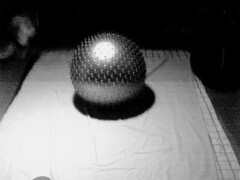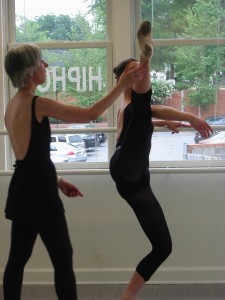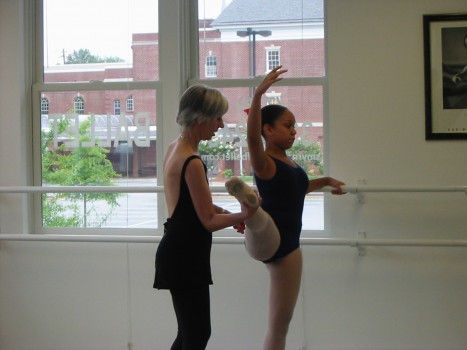Chris from Leotards and the Buns in Them recently talked to Adult Ballerina Project about why he does ballet and what advice he gives to his fellow ballerinas. As I’ve mentioned before, I first found Chris’s blog when I was looking for instructions on how to build my own barre, and I found them on his website–it worked wonderfully and I only spent about 30 dollars. You can find out how to make your own here.
Adult Ballerina Project: When did you start doing ballet as an adult?
Chris: I was in college, so I’d say 22, 23.
ABP: Did you ever take lessons as a kid?
C: No, but I always wanted to. For some reason I couldn’t get up the nerve to tell anyone I wanted to be a dancer. I happily played sports instead, baseball, soccer and eventually tennis. However I did get a yearly dose of dancing, we did square dancing in elementary and junior high. I didn’t care much for it at all, until I realized I got to be close to some girls who I had huge crushes on. However, in my mind those two styles of dancing weren’t even in the same galaxy, square dancing didn’t do it for me.
ABP: Why did you decide to take ballet as an adult?
C: I realized that if you wanted to do something you should go ahead and do it. It’s a total cliche, but life is too short not to do something you always wanted to do. I found myself with the time and the means and couldn’t think of a reason not to try. Plus, I had a class with two girls who were ballet students in the conservatory program and after talking to them all semester long I finally got up the nerve and signed up for a class, and fell in love with it from class number one.
ABP: Where do you take classes?
C: Currently I go to the School of the Kansas City Ballet. They just moved into a beautifully rehabbed building, a former powerhouse for the nearby Union Station and former post office. I’ve been to a long list of other schools since I started stretching across the country as I’ve moved around. I also try to drop into classes when I travel, Chicago, Portland, San Francisco…
ABP: What is your favorite part about ballet?
C: Everything, it’s such a liberating experience, it’s difficult to pick what would be my favorite. But if forced to pick something, I’d say jumping or leaping.
ABP: What is your least favorite part?
C: Paying for class, those damn class cards it can get expensive, especially when your taking three classes a week. I’ve purposely never sat down and added up what I have spent on classes and dancewear. Cha-Ching!
I don’t much care for the injuries classes may or may not have caused or have aggravated. I’m currently on a two month hiatus, tendinitis and an injury from a bike accident, only a few more weeks to go though.
ABP: What motivates you to keep dancing?
C: It’s pretty simple, I just want to improve. I can be quite competitive at times and the thought of classmates improving while I’m not really gets me going. I know that I haven’t a future in ballet, but I keep at it regardless. That’s one reason I built myself a barre. There was talk about a performance opportunity for the adult open classes, which really peaked my interest, I’d love to be in a place where performance is a possibility.
ABP: Do you take any other dance classes?
C: No. But I’ve tried modern and jazz, they were fun but I think I’m a classical ballet kind of guy.
ABP: What are your hobbies outside of ballet?
C: I race cyclocross, a quirky form of cycling, it’s a f’ing blast! It’s funny but several members of my cycling team are former dancers and we all have found that our background in ballet has enhanced our racing both physically and mentally.
ABP: What advice would you like to give to those who want to start ballet or have just started?
C: Do it! It’s never too late.
More profiles:



 for rolling out your lower legs). Boyfriend said the scissor balance was tough but felt like it was a good workout while I couldn’t manage to do it. This link also has great recommendations for foam rollers. I personally love my theraroll. You can check out some muscle release techniques from them
for rolling out your lower legs). Boyfriend said the scissor balance was tough but felt like it was a good workout while I couldn’t manage to do it. This link also has great recommendations for foam rollers. I personally love my theraroll. You can check out some muscle release techniques from them 




